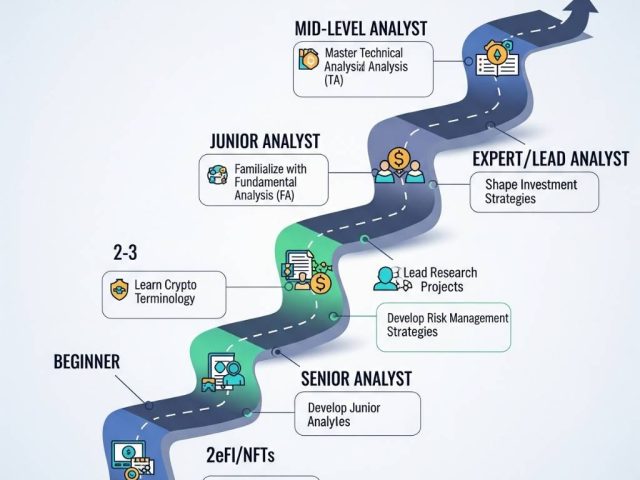Introduction
Cryptocurrency has taken the financial world by storm, offering a new and exciting way to invest and transact. Whether you’re looking to diversify your investment portfolio or simply curious about the hype, understanding the basics of cryptocurrency is essential. This guide will walk you through the essentials of getting started with crypto safely, providing you with the knowledge and confidence you need to navigate this digital frontier.
What is Cryptocurrency?
Cryptocurrency is a digital or virtual form of currency that uses cryptography for security. Unlike traditional currencies issued by governments (fiat money), cryptocurrencies operate on decentralized networks based on blockchain technology. This means they are not controlled by any central authority, making transactions more transparent and secure.
The History of Cryptocurrency
Cryptocurrency’s journey began with Bitcoin, introduced by an anonymous figure known as Satoshi Nakamoto in 2009. Bitcoin was designed as a peer-to-peer electronic cash system, allowing for secure and direct transactions without the need for intermediaries. Since then, the crypto landscape has expanded significantly, with thousands of different cryptocurrencies now available.
Types of Cryptocurrencies
Bitcoin
Bitcoin (BTC) is the first and most well-known cryptocurrency. It serves as the digital gold standard in the crypto world, and its value often influences the market.
Altcoins
Altcoins are any cryptocurrencies other than Bitcoin. Some of the most prominent include:
- Ethereum (ETH): Known for its smart contract functionality.
- Litecoin (LTC): Often referred to as the silver to Bitcoin’s gold.
- Ripple (XRP): Focuses on real-time cross-border payment systems.
Stablecoins
Stablecoins are cryptocurrencies designed to minimize price volatility by being pegged to a reserve asset like the US Dollar. Examples include Tether (USDT) and USD Coin (USDC).
How to Buy Cryptocurrency
Choosing a Cryptocurrency Exchange
A cryptocurrency exchange is a platform where you can buy, sell, and trade cryptocurrencies. Some popular exchanges include Coinbase, Binance, and Kraken. It’s important to choose an exchange that is reputable and user-friendly.
Setting Up an Account
Once you’ve chosen an exchange, you’ll need to set up an account. This typically involves providing your email address, creating a password, and agreeing to the exchange’s terms of service.
Verifying Identity
Most exchanges require you to verify your identity before you can start trading. This process, known as Know Your Customer (KYC), involves uploading a government-issued ID and sometimes additional documents.
Depositing Funds
After your account is set up and verified, you can deposit funds. This can usually be done via bank transfer, credit card, or other payment methods supported by the exchange.
Understanding Wallets
Types of Wallets
Cryptocurrency wallets are used to store your digital assets. There are two main types:
- Hot Wallets: Connected to the internet, making them convenient for frequent transactions but potentially more vulnerable to hacking.
- Cold Wallets: Offline storage, which offers higher security but less convenience.
How to Set Up a Wallet
Setting up a wallet involves choosing the right type for your needs and following the provider’s instructions. Popular hot wallets include MetaMask and Trust Wallet, while Ledger and Trezor are well-known cold wallets.
Securing Your Wallet
Security is paramount when it comes to crypto wallets. Always enable two-factor authentication (2FA) and keep your private keys secure. Never share your private keys with anyone.
Storing Cryptocurrency Safely
Importance of Security
Given the irreversible nature of cryptocurrency transactions, security should be a top priority. Storing your crypto safely involves a combination of best practices to protect against loss or theft.
Best Practices for Storing Crypto
- Use Strong Passwords: Ensure your passwords are unique and complex.
- Enable 2FA: Adds an extra layer of security to your accounts.
- Backup Your Wallet: Regularly back up your wallet to avoid losing access.
The Role of Blockchain Technology
What is Blockchain?
Blockchain is the underlying technology behind cryptocurrencies. It is a decentralized ledger of all transactions across a network of computers, ensuring transparency and security.
How Blockchain Supports Cryptocurrency
Blockchain allows for secure, transparent, and tamper-proof transactions. Each block in the chain contains a list of transactions, and once a block is added, it cannot be altered, ensuring the integrity of the data.
Common Cryptocurrency Terms
Key Terms and Jargon
- Altcoin: Any cryptocurrency other than Bitcoin.
- Mining: The process of validating transactions and adding them to the blockchain.
- Private Key: A secret key used to sign transactions and access your cryptocurrency.
Importance of Understanding Terminology
Familiarizing yourself with common cryptocurrency terms can help you navigate the market more effectively and avoid potential pitfalls.
Evaluating Cryptocurrency Investments
How to Research Cryptocurrencies
When considering an investment, it’s crucial to research thoroughly. Look at the project’s whitepaper, team, use case, and market performance.
Understanding Market Trends
Cryptocurrency markets are highly volatile. Understanding market trends and sentiment can help you make more informed investment decisions.
Risks and Challenges
Market Volatility
Cryptocurrency prices can be highly volatile, leading to significant gains or losses in a short period.
Security Risks
While blockchain technology is secure, the platforms and exchanges that operate on top of it can be vulnerable to hacking.
Regulatory Risks
The regulatory environment for cryptocurrencies is still evolving, and changes can impact the market significantly.
Legal and Tax Implications
Understanding Cryptocurrency Regulations
Different countries have different regulations regarding cryptocurrency. It’s important to understand the legal landscape in your jurisdiction.
Tax Obligations
Cryptocurrency transactions can have tax implications. Ensure you understand your tax obligations and report your earnings accurately.
Tips for Safe Crypto Trading
Diversifying Your Portfolio
Don’t put all your eggs in one basket. Diversify your investments to spread risk.
Avoiding Scams and Fraud
Be wary of too-good-to-be-true offers and always do your research. Stick to reputable exchanges and wallets.
Future of Cryptocurrency
Current Trends
The crypto world is continually evolving, with new technologies and applications emerging regularly.
Predictions for the Future
While predicting the future is challenging, many experts believe that cryptocurrency and blockchain technology will continue to grow and integrate into various sectors.
Conclusion
Getting started with cryptocurrency can be an exciting journey, but it’s important to approach it with caution and knowledge. By understanding the basics, choosing secure platforms, and staying informed about market trends, you can navigate the crypto world safely and confidently.
FAQs
What is the best cryptocurrency for beginners?
Bitcoin is often recommended for beginners due to its widespread recognition and relatively stable market presence.
How much should I invest in cryptocurrency?
Invest only what you can afford to lose. Cryptocurrency markets are volatile, and it’s important to manage risk.
Can I lose all my money in cryptocurrency?
Yes, the market is highly volatile, and there’s a risk of significant losses. It’s crucial to invest wisely and stay informed.
How do I know if a cryptocurrency exchange is safe?
Look for exchanges with strong security measures, positive reviews, and regulatory compliance.
What are the most common cryptocurrency scams?
Common scams include phishing attacks, Ponzi schemes, and fake ICOs (Initial Coin Offerings). Always do thorough research before investing.





